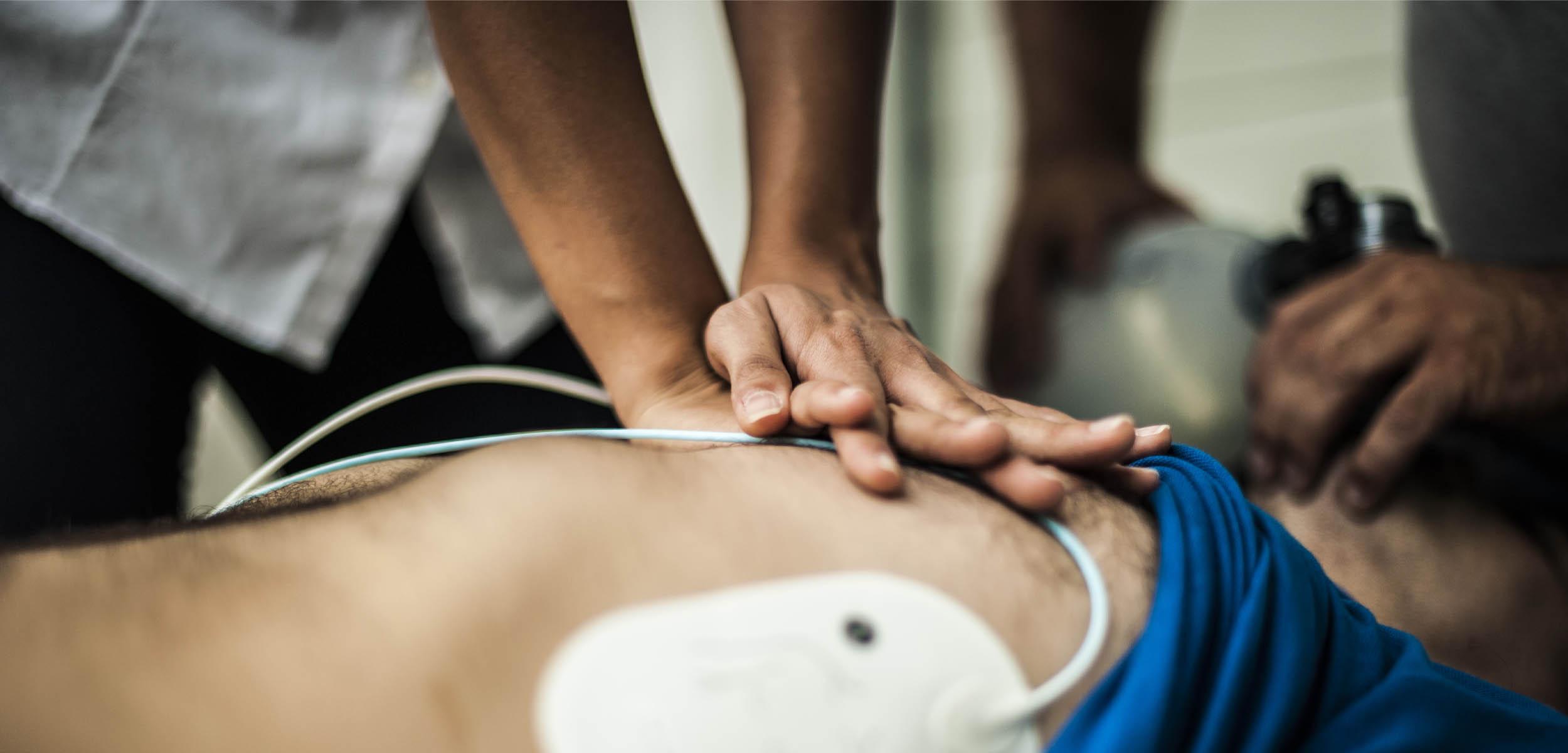When someone collapses from a sudden cardiac arrest, knowing how to use a defibrillator could mean the difference between life and death. While it may sound daunting, modern defibrillators are designed for anyone to use, even without formal training.
This guide explains how to use a defibrillator safely and effectively in an emergency. Whether you are in the workplace, at a public event, or simply walking by, your actions can help save a life.
What is a defibrillator?
A defibrillator, also known as an automated external defibrillator or AED, is a life saving device used when a person’s heart suddenly stops beating. It delivers a controlled electric shock to the heart in an attempt to restore a normal rhythm.
Defibrillators are made for public use and provide clear spoken and visual instructions. You do not need to be a medical professional to use one. Most models are designed so that anyone can operate them in a high pressure situation.
You can view our full range of defibrillators suitable for public and workplace use.
Step by step guide: how to use a defibrillator
1. Check the person and call 999
First, check that it is safe to approach. Speak to the person and check for signs of breathing. If they are unresponsive and not breathing normally, call 999 immediately and begin chest compressions.
Ask someone to fetch the nearest defibrillator. If you are alone, get the AED yourself after calling for help. Many schools, leisure centres, supermarkets and train stations now have a defibrillator on site.
You can also find registered AEDs in your area by visiting The Circuit, the national defibrillator network.
2. Turn on the defibrillator
Open the lid or press the power button. The defibrillator will begin to speak and guide you through the steps. Follow the instructions carefully.
3. Attach the pads
Remove any clothing from the chest, including bras, as these can affect pad placement and pad contact. If the person is wet, dry their chest. Some AEDs come with a prep kit that include a small towel and a razor for this reason.
Place one pad on the upper right chest, just below the collarbone. Place the second pad on the lower left chest, just below the armpit. The diagrams on the pads will show you exactly where to place them.
4. Let the defibrillator assess the heart
Once the pads are in place, the AED will check the heart’s rhythm. Do not touch the person during this step.
The AED will then tell you whether a shock is needed.
5. Deliver the shock if advised
-
If it is a fully automatic AED, it will deliver the shock on its own
-
If it is a semi automatic AED, it will tell you to press a button
Make sure no one is touching the casualty. Step back while the shock is delivered.
6. Resume chest compressions
After the shock, or if no shock is advised, the AED will prompt you to continue CPR. Carry out chest compressions for two minutes until the defibrillator reassesses the heart rhythm.
Continue to follow the AED’s instructions until the person shows signs of recovery or until emergency services take over.
Can I be held responsible for using a defibrillator?
No. In the United Kingdom, Good Samaritan protections support people who act in good faith during emergencies. You cannot be held legally responsible for trying to help someone in need.
AEDs are built with safety checks and will not deliver a shock unless one is medically necessary. You cannot harm someone with a defibrillator by using it incorrectly.
For an example of a user-friendly, safety-focused model, explore our guide to the ZOLL AED Plus®, a popular choice for its real-time prompts and ease of use in high-pressure moments.
Why defibrillator awareness matters
Every minute without defibrillation reduces the chance of survival by around ten percent. Fast action and confident use of an AED gives a person the best chance of survival following sudden cardiac arrest.
At Defib Supplies, we want every workplace and public space to be prepared. Browse our defibrillators, training units, and resources to help your team be ready to act.


